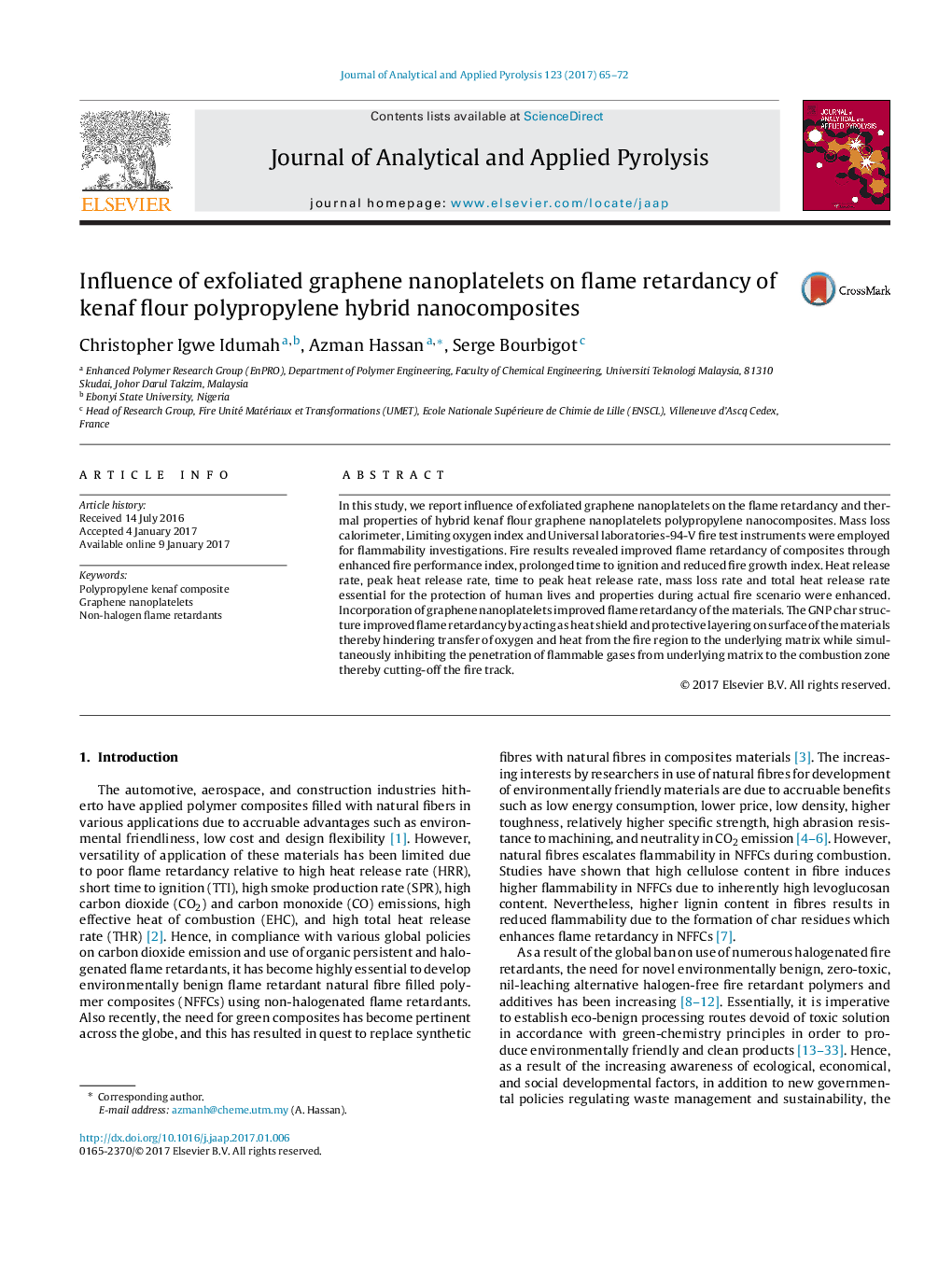| Article ID | Journal | Published Year | Pages | File Type |
|---|---|---|---|---|
| 5134522 | Journal of Analytical and Applied Pyrolysis | 2017 | 8 Pages |
â¢Synthesis of hybrid kenaf-GNP polymer composite via shearing forces and optimized temperature.â¢Achievement of non-halogenated flame retardancy of green material due to kenaf-GNP synergy.â¢Reduction of carbon monoxide and carbon dioxide emission, reduction of smoke production rate, heat release rate, total heat released, and mass loss rate.â¢Graphene nanoplatelets improved flame retardancy of polypropylene/kenaf system.
In this study, we report influence of exfoliated graphene nanoplatelets on the flame retardancy and thermal properties of hybrid kenaf flour graphene nanoplatelets polypropylene nanocomposites. Mass loss calorimeter, Limiting oxygen index and Universal laboratories-94-V fire test instruments were employed for flammability investigations. Fire results revealed improved flame retardancy of composites through enhanced fire performance index, prolonged time to ignition and reduced fire growth index. Heat release rate, peak heat release rate, time to peak heat release rate, mass loss rate and total heat release rate essential for the protection of human lives and properties during actual fire scenario were enhanced. Incorporation of graphene nanoplatelets improved flame retardancy of the materials. The GNP char structure improved flame retardancy by acting as heat shield and protective layering on surface of the materials thereby hindering transfer of oxygen and heat from the fire region to the underlying matrix while simultaneously inhibiting the penetration of flammable gases from underlying matrix to the combustion zone thereby cutting-off the fire track.
Graphical abstractDownload high-res image (221KB)Download full-size image
